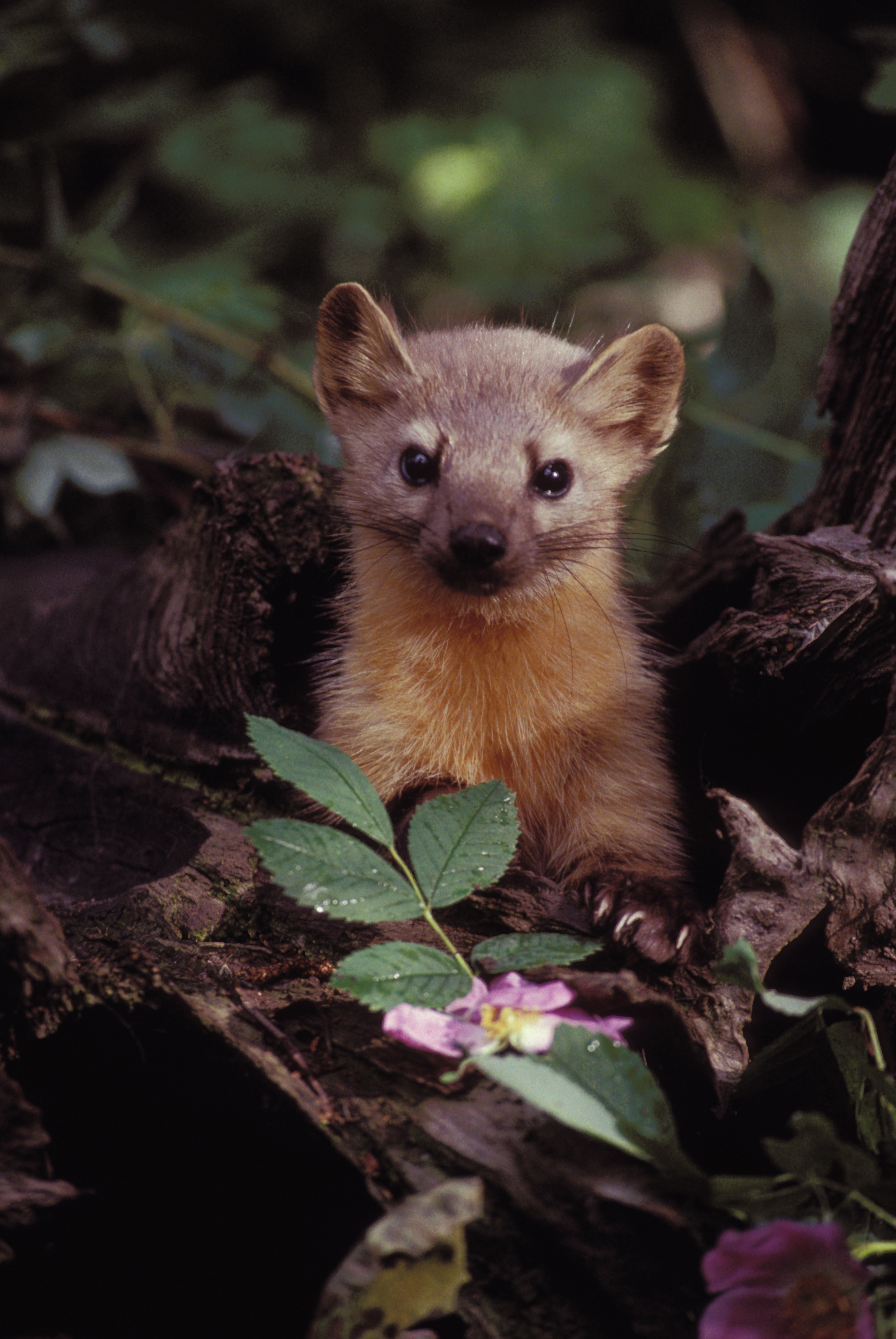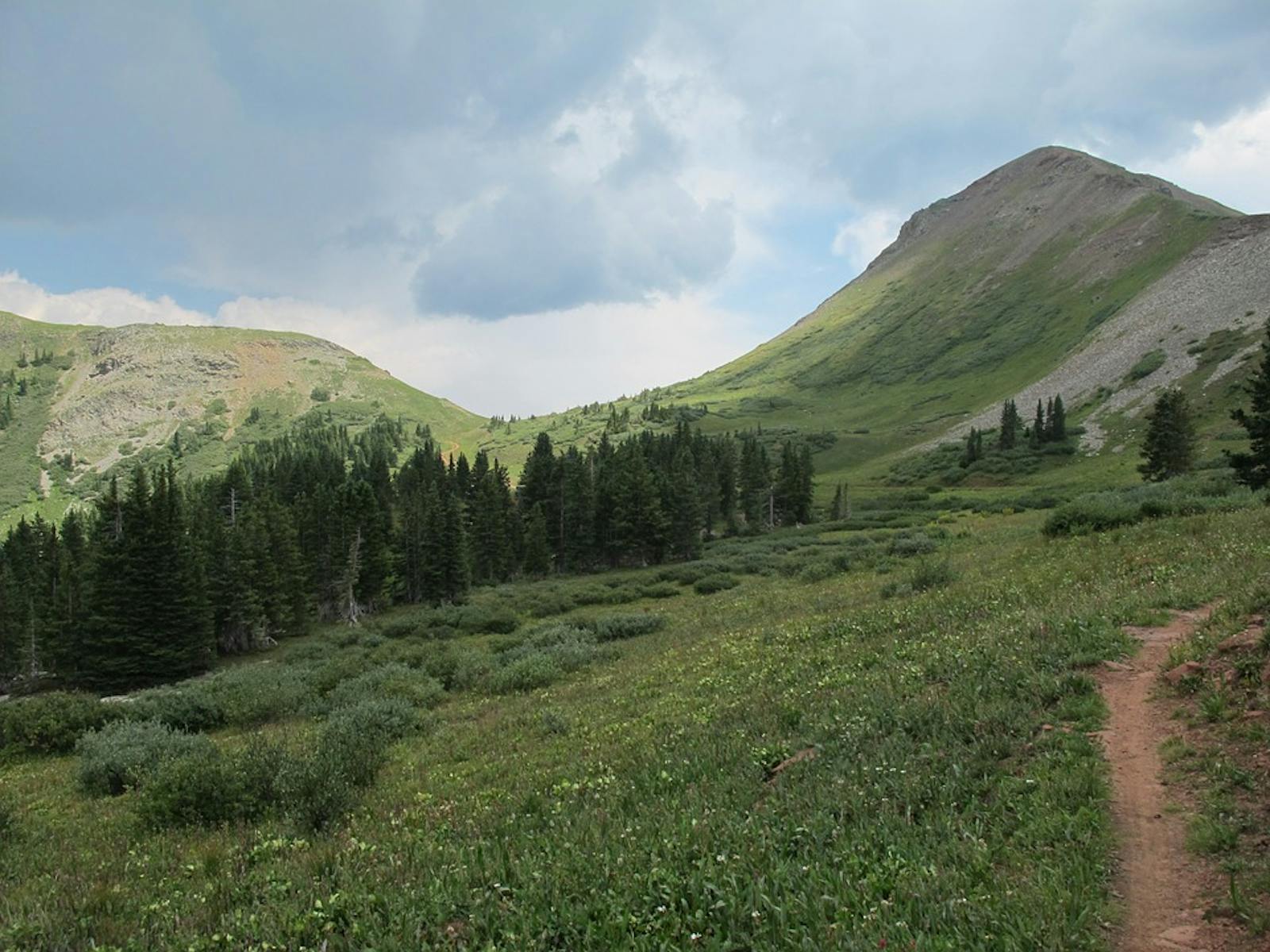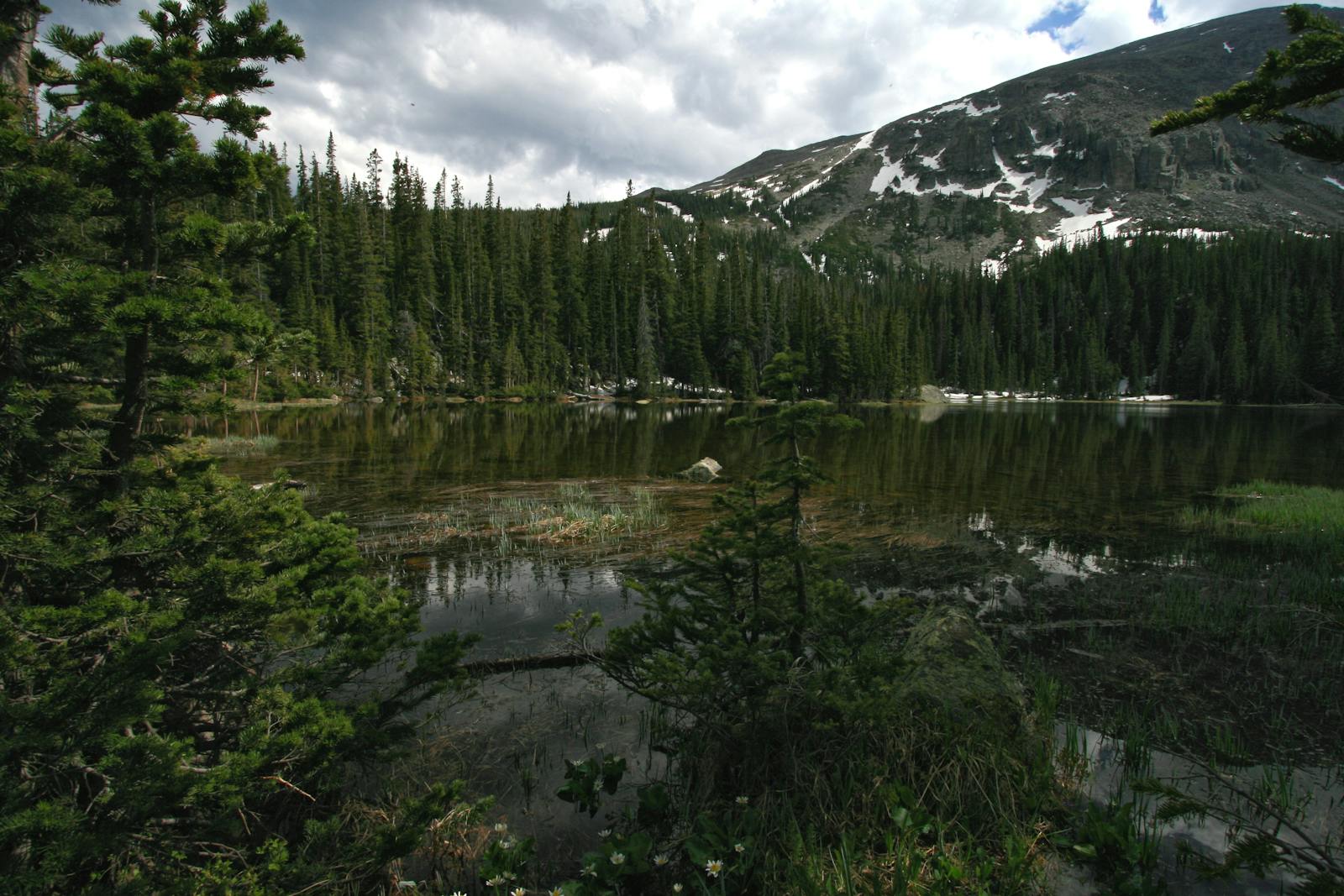Colorado Rockies Forests
The ecoregion’s land area is provided in units of 1,000 hectares. The conservation target is the Global Safety Net (GSN1) area for the given ecoregion. The protection level indicates the percentage of the GSN goal that is currently protected on a scale of 0-10. N/A means data is not available at this time.
Bioregion: Colorado Plateau & Mountain Forests (NA19)
Realm: Northern America
Ecoregion Size (1000 ha):
14,591
Ecoregion ID:
353
Conservation Target:
31%
Protection Level:
5
States: United States: CO, WY, NM, UT
Undoubtedly, the best known and loved mountains of the western United States are the Colorado Rockies. Stretching beyond Colorado, from the vicinity of Casper, Wyoming in the north, south to Santa Fe, New Mexico, and with outliers in southeastern Utah (Abajo Mountain and the La Sal Mountains east of Moab), the Colorado Rockies Forests ecoregion is massive and diverse in physical conditions and vegetation.
These mountains, the highest in the entire Rocky Mountains, include linear ranges such as the Laramie Mountains (Wyoming, Colorado) and the Sangre de Cristo (Colorado) as well as complex arrays of peaks and massifs, such as the San Juan Mountains of southwestern Colorado and adjacent New Mexico.
This ecoregion is bordered on the east and northeast by the Western Shortgrass Prairie ecoregion, from which it arises abruptly; on the south and west by the Colorado Plateau Shrublands ecoregion; and on the northwest by the Wyoming Basin Shrub Steppe ecoregion. The level of protection of the Colorado Rockies, at 14%, is far below what is required for comprehensive conservation, especially because most large protected areas (e.g., designated Wilderness Areas) are confined to higher elevations, leaving many lower-elevation natural communities unrepresented. With 16% of habitat outside protected areas still intact, however, opportunities remain to increase protection significantly.

The flagship species of the Colorado Rockies Forests ecoregion is the elk. Image credit: Yellowstone National Park, Flickr.
The climate of the Colorado Rockies Forests ecoregion is generally dry continental. However, given the great range of latitude as well as long elevation gradients unparalleled in the 48 contiguous United States, variation in local climate and vegetation is strong. Four major climatic zones are recognized in this ecoregion: foothill, montane, subalpine, and alpine. The altitudinal range and vegetation of these zones varies across the ecoregion as a consequence of latitude and the position of air masses.
The west slopes of the Rockies, which are protected from southward flows of arctic air, are less cold in winter than the east slopes. Therefore, southern (madrean) plant species associated with the Southwest (e.g., Arizona Mountains Forests and Sierra Madre Occidental Pine-Oak Forests ecoregions) extend north nearly to northern Colorado on the west slopes, but are largely absent from the eastern slopes in Colorado. With increasing elevation, temperature drops, precipitation increases (though often with a secondary decline at the highest elevations), solar radiation increases, and wind speed and snow depth and duration usually increase. All of these factors influence vegetation and associated plant and animal species.
The lowest elevations in the Colorado Rockies Forests ecoregion are typically grassland. Proceeding uphill, the vegetation zones are characteristically pinyon-juniper, ponderosa pine-Gambel oak, Douglas-fir (often with white fir or blue spruce on more sheltered or wetter sites), lodgepole pine (especially in the north), Engelmann spruce-subalpine fir, and at the highest elevations, alpine tundra.
The alpine tundra in this ecoregion is some of the most extensive in North America. Large stands of aspen, regenerating after fire, occur in many areas, and bristlecone pine and limber pine occur on exposed sites at high elevations. Other plant communities include riparian forests and subalpine meadows.
Large herds of elk are a striking feature of this ecoregion, as are abundant mule deer. Black bear are abundant and it is possible that grizzly bear still occur here, as well as mountain lion and American marten. The last confirmed grizzly south of Yellowstone National Park was killed after supposedly attacking a man in the San Juan Mountains in 1979. Reports of sightings still occur, but no definitive evidence of remaining grizzly bears has been presented. Wolverine occur in small numbers in this ecoregion, perhaps still as far south as the San Juan Mountains, and lynx were reintroduced in 1999. Both species are at the southern end of their North American distribution in this ecoregion.

American Marten with flowers. Image credit: USFWS, Creative Commons
Some large and highly intact protected areas exist in this ecoregion and contain significant elevation gradients and associated vegetation. These are particularly Rocky Mountain National Park northwest of Denver and the Weminuche and South San Juan Wilderness Areas in the San Juan Mountains of southwestern Colorado. Still, only 15% of the ecoregion is protected, which is insufficient given continuing threats from logging, mining, ski resort development and other recreation, and other activities.
Priority conservation actions for the next decade are to: 1) establish additional protected areas to better represent the full range of ecosystem types; 2) reintroduce, as needed, and promote recovery of native species, such as the grizzly bear and wolverine; and 3) restore natural disturbance regimes and control invasive non-native species.
Citations
1. Peet, R.K. 2000. Forests and meadows of the Rocky Mountains. Pages 75-121 in M.G. Barbour and W.D. Billings, eds. North American Terrestrial Vegetation, 2nd edition. Cambridge University Press, Cambridge, UK.
2. Ricketts, Taylor H., Dinerstein, Eric, Olson, David M., Loucks, Colby J., et al. 1999. Terrestrial Ecoregions of North America. Island Press Inc, Washington D.C., USA.
3. Mutel, C.F., and J.C. Emerick. 1984. From Grassland to Glacier: The Natural History of Colorado. Johnson Publishing Co., Boulder, CO




